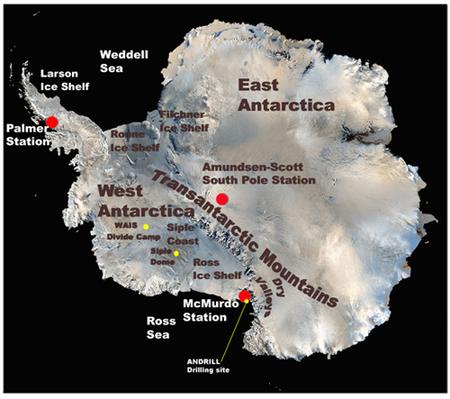Climate Change videos: Part I
The US National Research Council has been doing a lot recently to expand background knowledge of the climate system and of climate change. In tandem with a new report discussing strategies for advancing climate modeling, they have put up a an introductory web site on climate models (including some interviews with some actual climate modelers).
More comprehensively, they have helped put together a series of videos discussing everything from the definition of climate to attribution of climate changes and future projections. The series is in seven parts, viewable here. There are additional resources here.
We thought it would be interesting to have a separate post on each of the seven videos so that discussions on the videos themselves, or the topics covered (or not) could be more focused. So, with no further ado, here is part I: “What is Climate?”
Unforced variations: Oct 2012
Unforced variations: Sep 2012
Unforced Varations: Aug 2012
My oh Miocene!
Guest commentary by Sarah Feakins

That temperatures were warm at that time was not a huge surprise; surprising, was how much warmer things were – up to 11ºC (20ºF) warmer at the Antarctic coast! We expected to see polar amplification, i.e. greater changes towards the poles as the planet warms. This study found those coastal temperatures to be as warm as 7ºC or 45ºF during the summer months. This is a surprise because conventional wisdom has tended to think of Antarctica being getting progressively colder since ice sheets first appeared on Antarctica 34 million years ago (but see Ruddiman (2010) for a good discussion of some of the puzzles).
[Read more…] about My oh Miocene!
References
- S.J. Feakins, S. Warny, and J. Lee, "Hydrologic cycling over Antarctica during the middle Miocene warming", Nature Geoscience, vol. 5, pp. 557-560, 2012. http://dx.doi.org/10.1038/NGEO1498
- W.F. Ruddiman, "A Paleoclimatic Enigma?", Science, vol. 328, pp. 838-839, 2010. http://dx.doi.org/10.1126/science.1188292
Unforced Variations: July 2012
Unforced Variations; June 2012
Plugging the leaks
Guest commentary by Beate Liepert, NWRA
Clouds and water vapor accounts for only a tiny fraction of all water on Earth, but in spite of it, this moisture in the atmosphere is crucially important to replenishing drinking water reservoirs, crop yields, distribution of vegetation zones, and so on. This is the case because in the atmosphere, clouds and water vapor, transports a vast amount of water from oceans to land, where it falls out as precipitation. Scientists generally agree that rising temperatures in the coming decades will affect this cycling of water. And most climate models successfully simulate a global intensification of rainfall. However, physical models often disagree with observations and amongst themselves on the amount of the intensification, and global distribution of moisture that defines dry and wet regions.
[Read more…] about Plugging the leaks
Unforced variations: May 2012
New open thread for this month: misrepresentations of wind farm impacts on local climate? Clouds and contrarians? or whatever…